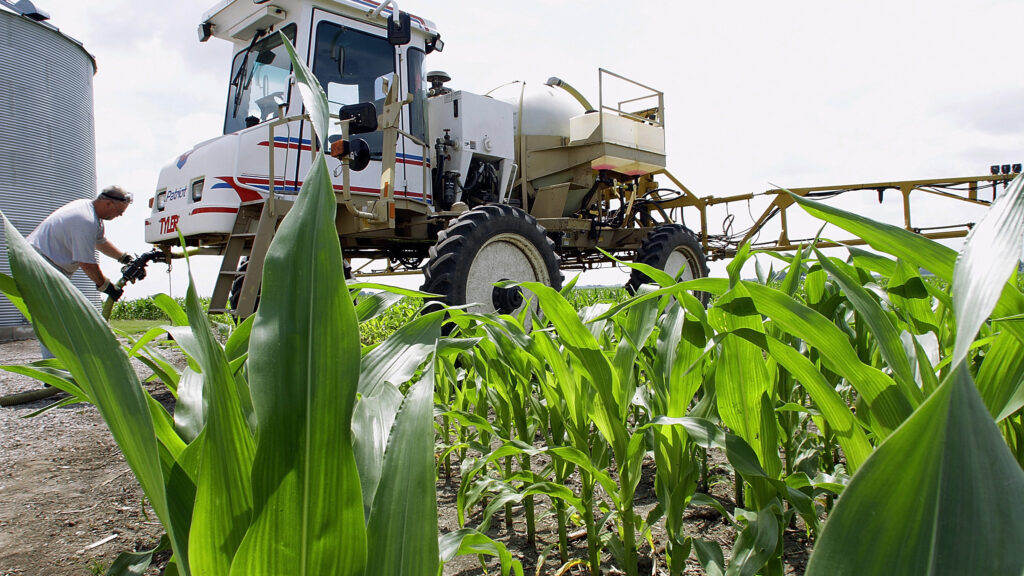
After months of anticipation and two leaked drafts, the Make America Healthy Again Commission has finally released its second report, “Make Our Children Healthy Again,” outlining its public health agenda and strategy. America’s new public health authorities, from Health and Human Services Secretary Robert F. Kennedy Jr. on down, have stated that they want to make sure our food is whole, healthy, and nutritious. This means that the commission, like me and many other Americans, has been trying to figure out what gets into our food that doesn’t belong there.
If you read the MAHA Commission’s first report, released in May, you’ll recall it offered one alarming answer to that question: glyphosate, a popular broad-spectrum weedkiller and the most widely used pesticide in America. Strangely, despite raising the specter of pesticide harms in its first report, the commission does not include reducing the use of specific pesticides such as glyphosate as one of the myriad public health solutions proposed in the second report.
Advertisement
Each year, the U.S. uses at least 1 billion pounds of pesticides and herbicides, and glyphosate makes up more than a quarter of that total. Nearly 300 million pounds of glyphosate-based herbicides are sprayed annually throughout the farmland where much of America’s food grows. Given these staggering numbers, it should come as no surprise that researchers have found glyphosate in our groceries, from whole grains to wines.
Some of that glyphosate winds up in our bodies. More than 80% of Americans over the age of 6 have recently been exposed to glyphosate through diet, skin contact, or inhaling chemical particles, according to a Centers for Disease Control and Prevention study.
Pesticide companies assure us that widespread exposure to their chemicals is not only safe, it’s necessary for food production. But we grow more food in the United States than we eat, and plenty of organic and regenerative farms are already pesticide-free. More importantly, if four out of every five Americans are exposed to a chemical, we should be absolutely sure there are no associated risks. We have no such certainty regarding glyphosate.
Advertisement
Numerous scientific studies have linked glyphosate to various health conditions. More than two decades ago, a study linked glyphosate to non-Hodgkin’s lymphoma, one of the most common cancers in the United States. Since then, additional studies have continued to link glyphosate to lymphoma and other cancers. The most recent of these studies was published just a few months ago.
The growing scientific evidence convinced the International Agency for Research on Cancer to classify glyphosate as “probably carcinogenic to humans” in 2015. Despite that warning from the World Health Organization’s cancer experts, Americans aren’t any better protected against this threat more than a decade later.
Americans who have been concerned about routine exposure to pesticides had hoped that would change now, given the MAHA Commission’s initial acknowledgement of the risks of cumulative pesticide exposure. In May, the commission also noted the disproportionate influence that chemical and agricultural industry money wields over food policy. Curiously, the more recent report, which outlined the commission’s public health strategy, emphasizes extensive collaboration with these very industries.
According to the strategy report, the commission plans to allocate funding for research, but this funding is primarily focused on pesticide application methods and new technologies. While these measures may eventually reduce pesticide use, they do little to create a meaningful short-term impact.
The report also includes provisions for public education on pesticides, which, in theory, is a positive step. Yet, the stated focus is “to ensure that the public has awareness and confidence in EPA’s pesticide robust review procedures,” rather than the risks of pesticide exposure and the related health concerns.
A more promising aspect of the report is its commitment to expanding education, awareness, and accessibility around regenerative agriculture practices and organic farming certification, which could directly lower pesticide use. However, on its own, this initiative will not reduce pesticide exposure quickly enough to safeguard public health.
Advertisement
Ultimately, the new strategy report lacks the decisive call to action and the urgency required to protect public health. And the Environmental Protection Agency, which regulates pesticides in the U.S., seems to be equally sluggish on glyphosate.
The EPA has said that glyphosate does not pose a risk to humans as long as it is used according to directions. But the agency has been reassessing the chemical since a federal appeals court determined that the EPA’s health assessment did not adequately consider whether glyphosate causes cancer. That was in 2022, or three years and more than 800 million pounds of glyphosate application ago.
While we wait for the EPA’s decision, thousands of Americans have taken legal action against Bayer and previous producers of Roundup, the most popular glyphosate-based herbicide in the country. The plaintiffs believe the chemical is responsible for making them sick, and juries are siding with them. The makers of Roundup have already spent at least $10 billion on settlements and jury awards from around 100,000 cases to date. Bayer maintains that Roundup does not cause cancer and it has not removed glyphosate from the industrial formulation of the product.
The MAHA Commission sounded the alarm about glyphosate and other pesticides in its May report. Now, disappointingly, the commission has opted not to encourage stronger regulation of these chemicals. But the EPA can act without the commission, and it should. Because as the commission’s first report noted, “To turn the tide … the United States must act decisively.”



